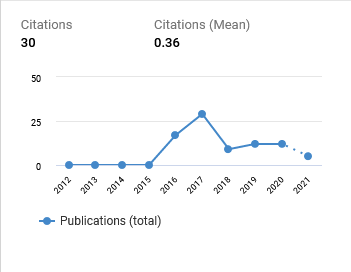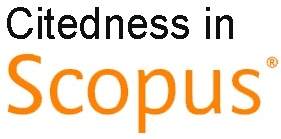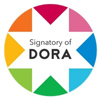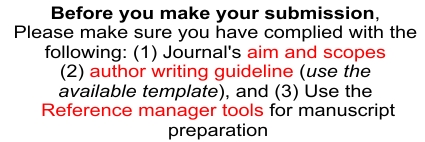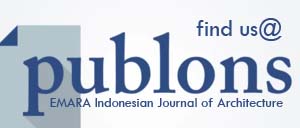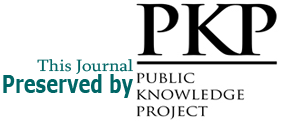Sustainable Lighting through Design and Energy Efficiency Consumption of Artificial Lighting in Educational Building.
Case Study : S Building, FTUI, Depok, Indonesia
DOI:
https://doi.org/10.29080/eija.v9i1.1724Keywords:
sustainable lighting, artificial lighting, ceiling design, lighting energy efficiencyAbstract
This research aims to explore sustainable lighting methods that can enhance lighting quality and energy efficiency in educational buildings. The background recognizes the importance of visual comfort and lighting quality in educational settings and their significant impact on students' academic performance. The specific case study focuses on Building S at the Faculty of Engineering, University of Indonesia in Depok, Indonesia. The study integrates principles of sustainable artificial lighting, design strategies, and energy-efficient lighting technologies through an extensive review of relevant literature and analysis using Dialux simulations and energy consumption calculations. Three different lighting design strategies are explored: Strategy 1 incorporating LED pendant lights, reflective finishing materials, and lighting automation; Strategy 2 utilizing LED spotlights and automation; Strategy 3 involving LED recessed lights and automation. The results demonstrate that Strategy 1 provides the highest levels of illuminance and energy efficiency, surpassing both the existing lighting conditions and the other strategies. The implementation of LED technology and lighting automation significantly reduces energy consumption while simultaneously enhancing the quality of lighting. This study highlights the importance of visual comfort and energy efficiency in fostering an ideal learning atmosphere in educational facilities. In conclusion, Strategy 1 emerges as the optimal choice for achieving both improved lighting quality and energy conservation in educational buildings.
Downloads
References
Bluyssen, P. (2009). The Indoor Environment Handbook: How to Make Buildings Healthy and Comfortable. Routledge. DOI: https://doi.org/10.4324/9781849774611
Brink, H. W., Loomans, M. G. L. C., Mobach, M. P., & Kort, H. S. M. (2021). Classrooms’ indoor environmental conditions affecting the academic achievement of students and teachers in higher education: A systematic literature review. Indoor Air, 31(2), 405–425. https://doi.org/10.1111/ina.12745
Cadena, J. D. B., Poli, T., Košir, M., Lobaccaro, G., Mainini, A. G., & Speroni, A. (2022). Current Trajectories and New Challenges for Visual Comfort Assessment in Building Design and Operation: A Critical Review. Applied Sciences, 12(6), Article 6. https://doi.org/10.3390/app12063018
City Planning Department. (2014). Jakarta Green Building User Guide: Volume 3—Lighting Systems. DKI Jakarta Provincial Government. https://depobeta.com/panduan-pengguna-bangunan-gedung-hijau-jakarta-volume-3-sistem-pencahayaan.html
Dubois, M.-C., & Blomsterberg, Å. (2011). Energy saving potential and strategies for electric lighting in future North European, low energy office buildings: A literature review. Energy and Buildings, 43(10), 2572–2582. https://doi.org/10.1016/j.enbuild.2011.07.001 DOI: https://doi.org/10.1016/j.enbuild.2011.07.001
Gill, S. (2023). Illuminate: Relationship Between Light Pollution, Quality of Life, and Innovation in Selected US Cities. International Journal of Social Science Research and Review, 6(4), Article 4. https://doi.org/10.47814/ijssrr.v6i4.1140
Great Britain Department for Communities and Local Government. (2014). Domestic Building Services Compliance Guide. NBS/HM Government.
Iliadis, I. G. (1998). Archaeological museum showcase lighting. International Journal of Lighting Research and Technology, 30(2), 75–80. https://doi.org/10.1177/096032719803000204 DOI: https://doi.org/10.1177/096032719803000204
Lechner, N. (2015). Heating, cooling, lighting: Sustainable design methods for architects (Fourth edition). John Wiley & Sons, Inc.
Muhamad, W. N. W., Zain, M. Y. M., Wahab, N., Aziz, N. H. A., & Kadir, R. A. (2010). Energy Efficient Lighting System Design for Building. 2010 International Conference on Intelligent Systems, Modelling and Simulation, 282–286. https://doi.org/10.1109/ISMS.2010.59 DOI: https://doi.org/10.1109/ISMS.2010.59
Nurdiana, N., Amin, S. A., & Thohari, A. (2018). Converting TL Lamps to LED Lamps (Case Study: Jakabaring Shooting Range Jakabaring Sport City Palembang). Jurnal Ampere, 3(2), Article 2. https://doi.org/10.31851/ampere.v3i2.2394
Scuello, M., Abramov, I., Gordon, J., & Weintraub, S. (2004). Museum lighting: Optimizing the illuminant. Color Research & Application, 29(2), 121–127. https://doi.org/10.1002/col.10231 DOI: https://doi.org/10.1002/col.10231
Setiati, T. W., & Budiarto, A. (2021). Optimization of lighting design in classroom for visual comfort (Case Study: Universitas Tridinanti Palembang Tower). IOP Conference Series: Earth and Environmental Science, 738(1), 012035. https://doi.org/10.1088/1755-1315/738/1/012035
Sholanke, A., Fadesere, O., & Elendu, D. (2021). The Role of Artificial Lighting in Architectural Design: A Literature Review. IOP Conference Series: Earth and Environmental Science, 665(1), 012008. https://doi.org/10.1088/1755-1315/665/1/012008
SNI 03-6197-2000. (2000). Konservasi energi sistem pencahayaan pada bangunan gedung (91.160.01 Penerangan secara umum). BSN. https://pesta.bsn.go.id/produk/detail/5696-sni03-6197-2000
Vollaro, R. D. L., Evangelisti, L., Carnielo, E., Battista, G., Gori, P., Guattari, C., & Fanchiotti, A. (2014). An Integrated Approach for an Historical Buildings Energy Analysis in a Smart Cities Perspective. Energy Procedia, 45, 372–378. https://doi.org/10.1016/j.egypro.2014.01.040 DOI: https://doi.org/10.1016/j.egypro.2014.01.040
Zehra, F., Korkmaz, K. A., & Ahmed, M. S. (2018). Journal of Buildings and Sustainability Sustainable Lighting System for University Buildings. Journal of Buildings and Sustainability, 1(2), 12–22.
Zumtobel. (2018). The Lighting Handbook (6th ed.). Imprint. https://www.zumtobel.com/PDB/teaser/EN/lichthandbuch.pdf

Downloads
Published
How to Cite
Issue
Section
Categories
License
Copyright (c) 2024 Rr. Nurindah Wiji Sejati, Ova Candra Dewi

This work is licensed under a Creative Commons Attribution-ShareAlike 4.0 International License.
- Authors retain copyright and grant the journal right of first publication with the work simultaneously licensed under a Creative Commons Attribution ShareAlike License that allows others to share the work with an acknowledgment of the work's authorship and initial publication in this journal.
- Authors are able to enter into separate, additional contractual arrangements for the non-exclusive distribution of the journal's published version of the work (e.g., post it to an institutional repository or publish it in a book), with an acknowledgment of its initial publication in this journal.
- Authors are permitted and encouraged to post their work online (e.g., in institutional repositories, pre-print sites, or on their website) prior to and during the submission process, as it can lead to productive exchanges, as well as earlier and greater dissemination of published work.





